
Earth at Night
In the 21st century most humans live in the flicker
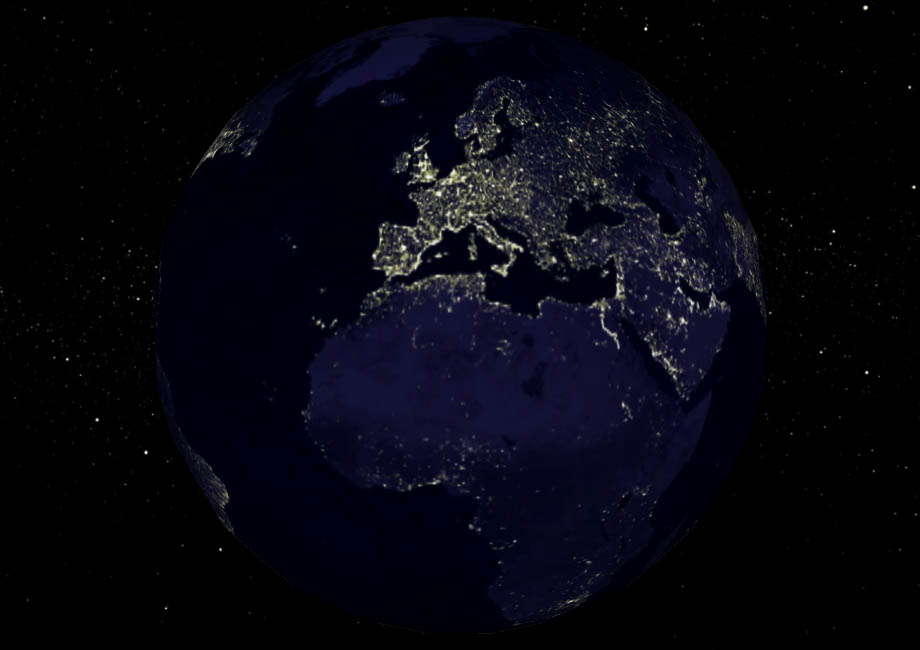
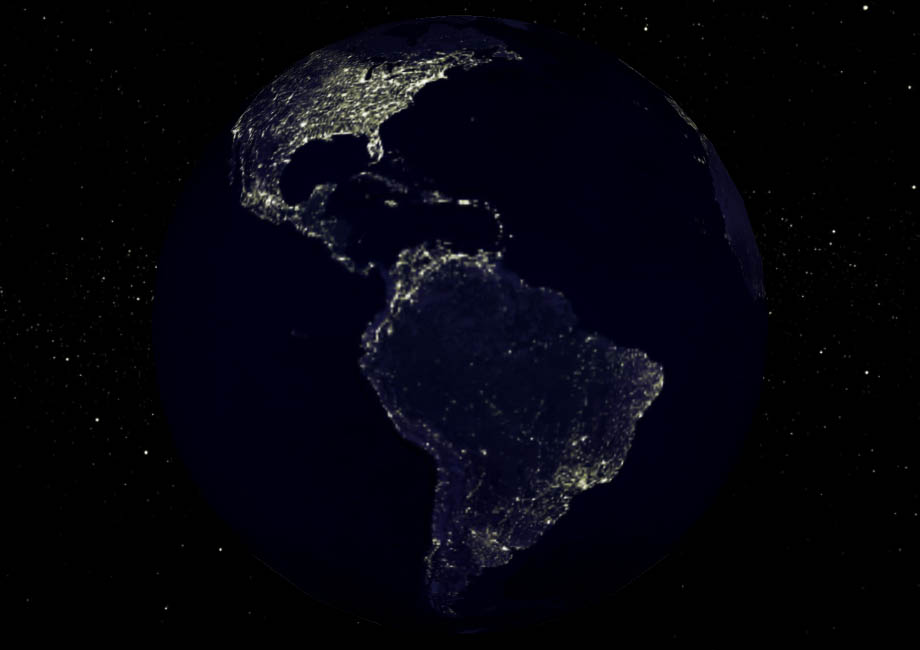
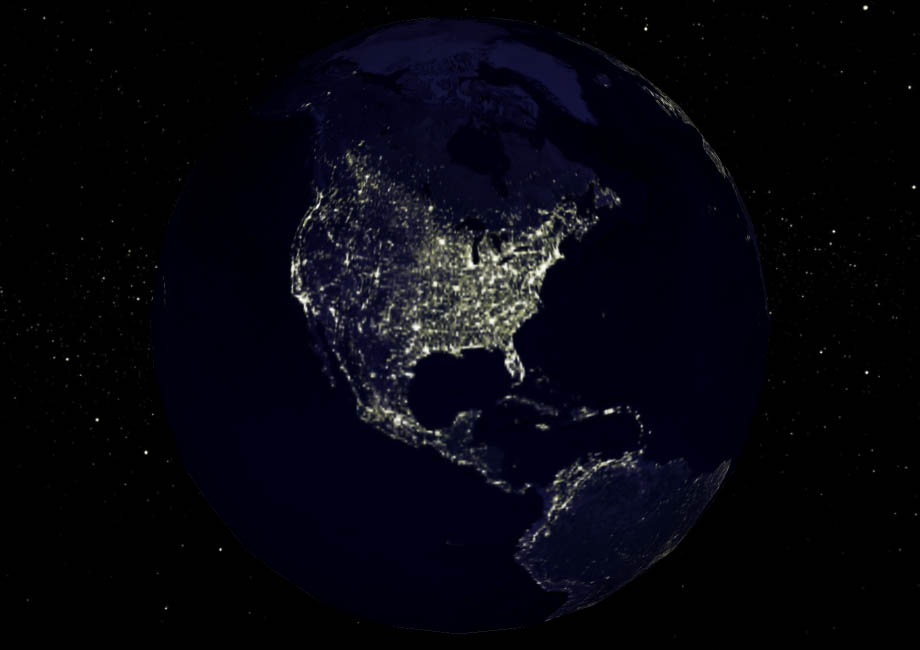
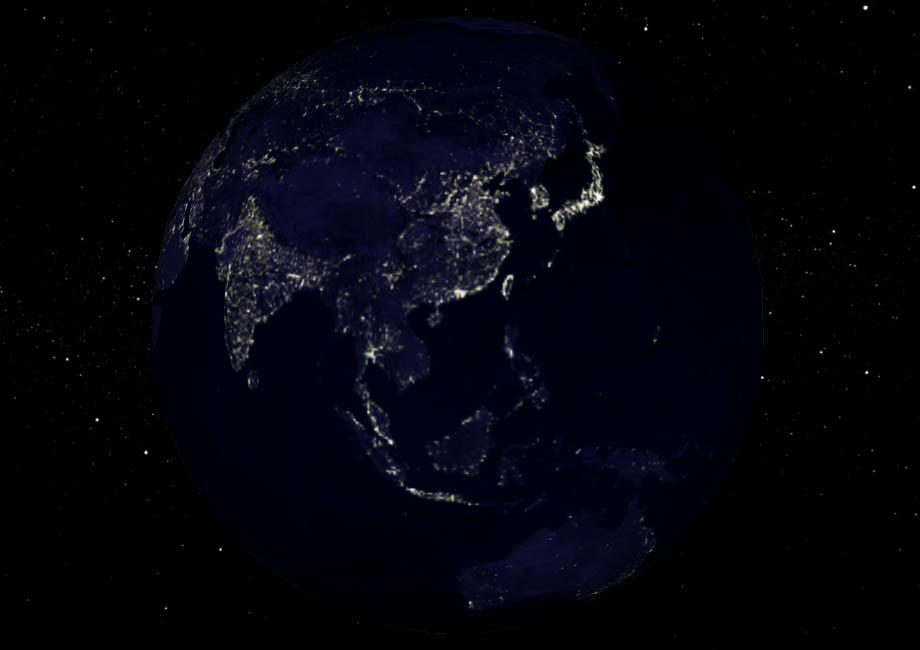
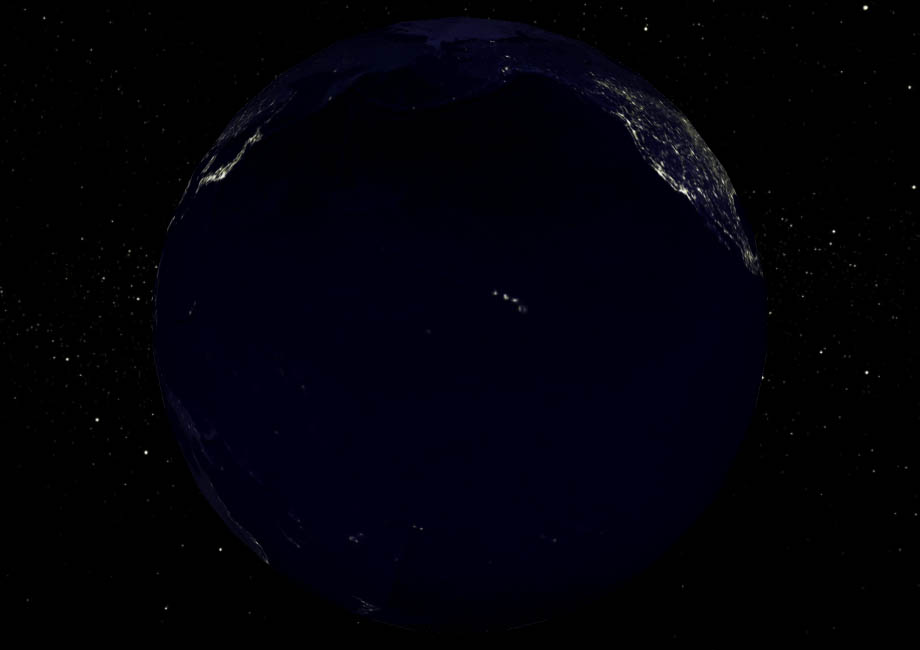
Adding transportation corridors gives a better view of the human footprint, a "cartography of the Anthropocene".
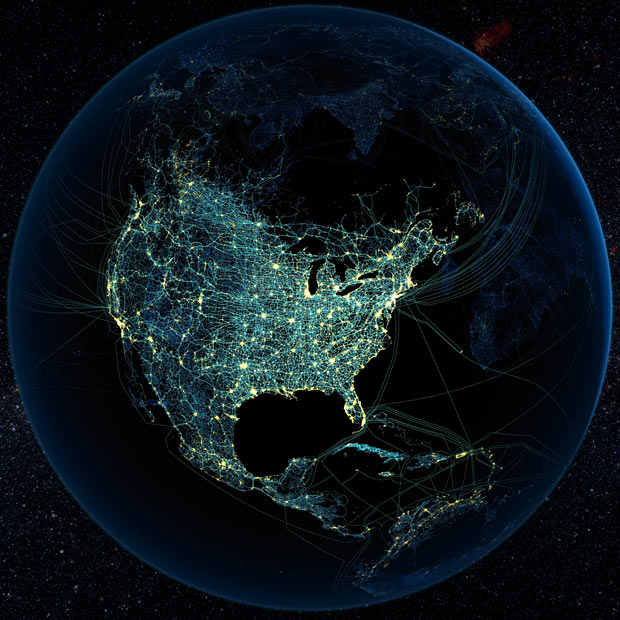
A hundred years ago Earth looked very different.

A
hundred years from now it may look very different.
Population was 1.8 billion in 1916 and per capita consumption of stuff and energy is now about 10x higher,
so a hundred years ago the lights would have been about 1/40th as bright.
After peak brightness, then what?
“Like a running blaze on a plain, like a flash of lightning in the clouds. We live in the flicker.”
― Joseph Conrad, Heart of Darkness 1899, who was likely thinking of:
"Thus shall you think of all this fleeting world: A star at dawn, a bubble in a stream,
A flash of lightning in a summer cloud, A flickering lamp, a phantom, and a dream."
The New World Atlas of Artificial Sky Brightness
Retrieved via Wayforward Machine, from Wikipedia 2353:
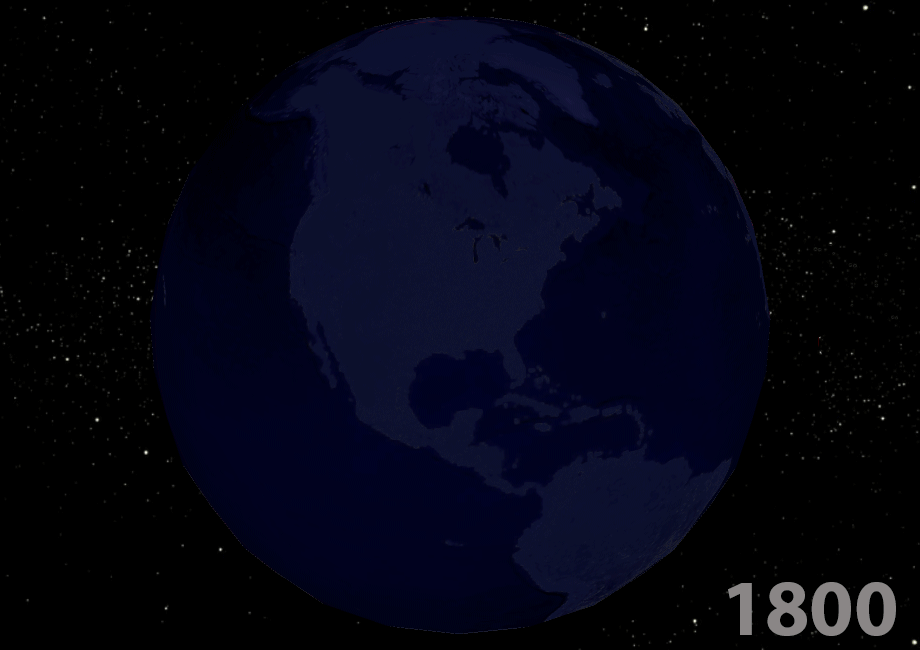 ar
ar
Earth at Night, 1800 - 2100
"Increases are of sluggish growth, but the way to ruin is rapid."
Letters to Lucilius #91, Lucius Annaeus Seneca, 64 CE
As a recent convert to Ecomodernism, I interpret the above animation to indicate that as we of the Anthropocene become evermore prosperous, amateur astronomy becomes so popular that the Dark-Sky Movement's demand that all have a right to view the night sky's heavenly wonders leads to a compromise: All human-scape areas where people want a well-lit life are domed. Roads between cities become tunnels, ask Elon Musk how. Areas outside of city domes will be restored to Nature. Envision honeycombed domes hundreds of meters thick containing the robotic control systems. The domes, small ones covering towns, vast ones covering cities, are each covered with soil and native vegetation where the deer and the buffalo again roam. A few hold-out Eloi may refuse to use fusion or clean nuclear power (or even clean coal) and cluster around hydroelectric sources because they don't believe in human exceptionalism nor value dark skies.
They who live with the animals will become as animals. The decoupling of techno-modern human life from nature will be completed in the near future. I used to be a growth apostate because at times I'd rather know than believe, but believing feels so much BETTER!, so I'm determined to remain a true believer—at least until after breakfast.
After breakfast I'm not so sure about anything. I don't believe in anything. I don't even believe in belief. Apart from a few tautological truisms, I don't know anything to be true, much less certain. My interpretation of the animation? When peak everything came, it was denied, but soon the view over the edge was apparent even to average intelligentsia types as they looked over the Seneca cliff from their position on high. Some humans (e.g. systems ecologists) who could say 'I told you so', offered a plan and a few elite public intellectuals were so well informed that they knew they knew nothing, and so they listened to those who endeavor to listen to Nature. A teachable moment had come. Most intelligentsia types, like rats of NIMH, decided to abandon ship and upload the new OS. The teaming billions soon clamored to board the new ship of fools, whose folly was yet less than their predecessors as all now knew themselves to be fools. Most came to admit they didn't know enough to have an opinion, and voted Ecolate Party. A naturocracy self-organized to lead humans to embrace the prosperous way down, to deglow the world, and transition to a low emergy sustainability as the millennia pass, so humans could come to love and understand the planet, and live with it properly for the first time (with perhaps a few exceptions) since the beginnings of agriculture.
A three minute video that is worth a look. The first 02:17 minutes are mostly agreed upon facts. The rest is perhaps 'feel-good delusional' which is obligatory when referencing the future of humanity if sponsors/supporters
are expected—it's a anthropocentric thing. To most primates, social approbation matters.
Welcome to the Anthropocene
| Transcript | Comments |
| 00:01 This is the story of how one species changed a planet. The latest chapter of our story begins in England 250 years ago. Fueled by coal, then oil, several brilliant inventions appeared. They ignited the Industrial Revolution which spread like wildfire through Europe, North America, Japan, then elsewhere. The great railways, then cars and highways connected people across the globe. Medical discoveries saved millions of lives. New artificial fertilizers meant we could feed more people. Population rose rapidly. But this was nothing compared with what was to come. | Or modernity began in 1712 England, 300 years prior to this 2012 production, when Newcomen used his steam engine to pump flooded coal mines so extraction could continue (for a time). ...fueled by coal, and oil (1745), gas (1825), hydroelelectric (1882), geothermal (1911), wind turbine (1927), nuclear power (1954), PV (1982) to keep unsustainable development going (for a time).... ...and airplanes within which at any given time about four million elites sit so they can get somewhere faster for some reason that seems valid to them. |
| 00:45 The 1950’s marked the beginning of the Great Acceleration. Globalization, marketing, tourism, and huge investments helped fuel enormous growth. People swarmed to cities which became even more powerful engines of creativity. In a single lifetime the well-being of millions has improved beyond measure: health, wealth, security, longevity. Never have so many had so much yet one billion are malnourished. | Cities are 'engines of creativity' among other things (Calhoun-rat-like experiments in human-zoo-like metro areas with unintended social pathologies growing).
In a single lifetime the well-being of millions and psychopathologies of billions (who are living longer despite high suicide rates, activity intolerance, high-speed transport, over-nutrition, opioid deaths and other forms of slow suicide) increased.... |
| 01:18 In a single lifetime we have grown into a phenomenal global force. We move more sediment and rock annually than all natural processes, such as erosion and rivers. We manage three quarters of all land outside the ice sheets. Greenhouse gas levels this high have not been seen for over one million years. Temperatures are increasing, we have made a hole in the ozone layer. We are losing biodiversity. Many of the world’s deltas are sinking due to damming, mining, and other causes. Sea level is rising, ocean acidification is a real threat. We are altering Earth’s natural cycles. | Beginning with agriculture about 10,000 years ago (400 generations ago), or the Industrial Devolution 300 years ago (12 generations ago) we have grown (not unlike a cancerous tumor)....
We mismanage 95%.... The biodiversity is not ours to loose. The life-support system for all life on Earth (that we too depend upon to avoid extinction) is loosing species a thousand times faster than before the Anthropocene, heading for a foreseeable ten thousand fold increase by the end of this century. |
| 02:03 We have entered the Anthropocene: a new geological epoch dominated by humanity. This relentless pressure on our planet risks unprecedented destabilization. | ...which could have started with using fire to alter biomes by Homo erectus, with technology enabled megafauna extinctions, with domestication of plants and animals, with the atomic bomb.... We don't risk unprecedented destabilization, it is already well underway. |
| 02:17 But our creativity, energy, and industry offer hope. We have shaped our past, we are shaping our present, we can shape our future. You and I are part of this story. We are the first generation to realize this new responsibility. As the population grows to nine billion, we must find a safe operating space for humanity, for the sake of future generations. Welcome to the Anthropocene. | Hope, yes, I'm an extreme cornucopian optimist, but we were shaped in the past as we are by present contingencies. We, as individuals or groups, are subsystems embedded within subsystems, all part of a remorseless dynamic we do not understand. We don't run the show. We are the environment. Know then thyself and thy system. Love and understand the dynamic to be delivered from it. |
97.3% of ecomodernists and Anthropocene entusiasts approved this video;
99.4% of humans did not like the comments, with 0.5% liking one comment.
Production and Direction
Owen Gaffney & Félix Pharand-Dêschenes
Animation
Félix Pharand-Dêschenes
Globïa
Script
Owen Gaffney
International Geosphere-Biosphere Programme
Narration
Sarah Sherborne
Graph Design and Animation
Capture
Data
IGBA
OpenStreetMap
NaturalEarthData
Greg’s Cable Map
NGA
NOAA
NASA
Music
Earlyguard “Continuo 1”
HECO “Giants”
Commissioned by
Planet Under Pressure 2012
March 26-29, London
Scientific Sponsors
International Geosphere-Biosphere Programme
World Climate Research Programme
International Human Dimensions Programme on Global Environmental Change
Earth System Science Partnership
International Counsel for Science
Commissioned for the
Welcome to the Anthropocene website
brought to you by:
International Geosphere-Biosphere Programme
Stockholm Resilience Centre, Stockholm University
SCIRO
SEI: Stockholm Environment Institute
International Human Dimensions Programme on Global Environmental Change
Globïa
Earth System Science Partnership
International Counsel for Science
World Climate Research Programme
Special thanks to:
Simon Torok
Sturle Hauge Simonsen
Sarah Cornell
Ben Creagh
Anne-Marie Douchet
Louve & Isis
www.anthropocene.info
MMXII

Earth as it may again appear. Deglow NOW!